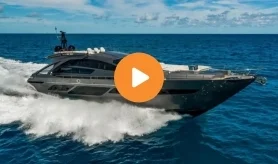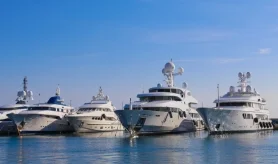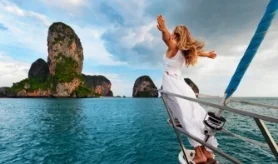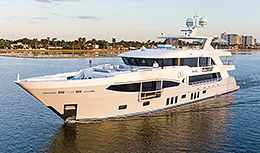- Alaskan Yachts
- Azimut Yachts
- Back Cove Yachts
- Beneteau Yachts
- Benetti Superyachts
- Bertram Yachts
- Boston Whaler
- Broward Yachts
- Buddy Davis Sportfish
- Burger Yachts
- Cabo Yachts
- Catamarans
- Carver Motoryachts
- Center Console
- Chris-Craft Yachts
- Cruisers Yachts
- DeFever Trawlers
- Dufour Sailboats
- Fairline Yachts
- Feadship Yachts
- Ferretti Yachts
- Formula Yachts
- Fountaine Pajot Cats
- Grady-White
- Grand Banks Trawlers
- Hargrave Yachts
- Hatteras Yachts
- Hinckley Picnic Boats
- Horizon Yachts
- Hydra-Sports
- Intrepid Boats
- Jarrett Bay Sportfish
- Jeanneau Yachts
- Kadey-Krogen Trawlers
- Lazzara Yachts
- Lekker Boats
- Luhrs Sportfish
- Marlow Yachts
- Maritimo Yachts
- Marquis Yachts
- McKinna Motoryachts
- Meridian Yachts
- Midnight Express
- MJM Yachts
- Mochi Craft
- Neptunus Motoryachts
- Nordhavn Trawlers
- Nordic Tugs
- Numarine Yachts
- Ocean Alexander Yachts
- Offshore Yachts
- Outer Reef
- Oyster Sailing Yachts
- Pacific Mariner Yachts
- Palmer Johnson Yachts
Cruising Antarctica: The Call of the Wild
The ability to hear and breathe clean, pure, 1,000-year-old “vintage air” is just one of the many reasons Antarctica is among the most exclusive cruising destinations on Earth.
Words by Bill Springer. Photography by Reeve Jolliffe.
The first thing I noticed was the silence.
This was not your average silence. It had texture. It had substance. It popped like champagne bubbles. “What’s that sound?” I asked Richard White, our expert guide. “Oh, that’s the sound of 1,000-year-old ice melting,” he said with a wry smile. “The air bubbles escaping from the melting ice pop when they hit the surface of the water.” That’s when it hit me: the ability to hear and breathe clean, pure, 1,000-year-old “vintage air” is just one of the many reasons Antarctica is among the most exclusive cruising destinations on Earth.
The four-stroke outboards on our black, expedition-grade Zodiacs purred along as we slowly pushed small chunks of ice out of our way. Glaciers glistened in the high-latitude sun. The air was the freshest I’ve ever breathed. Big blue bergs made of ancient ice stood guard all around us.
At that point in our week-long charter aboard the Hanse Explorer, a 160-foot-long, luxurious ice-class private yacht, we’d already heard thousands of squawking penguins feeding their young and seals barking contentiously to show the herd who’s boss. We’d even heard what pods of humpback whales breaching the surface sound like up close.

EXPEDITION OF A LIFETIME
As you might expect, exploring Antarctica with an intimate group of people aboard a private charter yacht is an amazing experience, but one that’s incredibly difficult to plan and pull off. Fortunately, the experts at EYOS Expeditions organized every element of this trip (charter, guides, permits, flights, itineraries everything) and made it all look pretty effortless. Instead of spending two days slogging across the Drake Passage to get to the prime cruising grounds of the Antarctic peninsula, EYOS arranged for our team of journalists to fly on a semi-private charter flight that took only two hours to get from Punta Arenas, Chile, to a gravel runway on King George Island. From there, all that was left to do was don the industrial-strength rubber boots we were told to bring (absolutely essential for jumping off Zodiacs, wading onto rocky beaches, and hiking across glaciers), and make the first of many Zodiac rides out to the ship.

ANTARCTIC IMMERSION
Being transported from the mania of my home in Massachusetts to an ultra-luxurious yacht beyond the range of available Internet service was even better than it sounds. At breakfast, Richard, our guide, outlined what was planned for the day: whale watching from the Zodiacs, a visit to a penguin colony, pack ice, lunch, and so on. Michelle, the chief stewardess, told us what was for lunch and everything else we needed to know about the comforts of the yacht. And, each day, Captain Jens told us everything that was planned for that day over the ship’s intercom system in a thick, soothing German accent.
The killer whales we spotted almost as soon as we left King George had us all scrambling up to the bridge with our cameras. And since it was still late summer in the southern hemisphere, we still had plenty of daylight when we stopped to see the seals at Half Moon Island. It was a routine that would only get better as the days passed.
The combination of amazing scenery, company, service, and about 21 or so hours of daylight made it hard to sleep. No one wanted to miss a thing. That was certainly the case our first night out as we transited the Bransfield Strait. Those who awoke early were treated to sights not seen anywhere else on earth massive square tabular icebergs that are often measured in miles, slowly riding the currents north from the Antarctic Sound.
Meanwhile, Captain Jens took us much deeper into the ice (much farther than any non-ice-class ship could go) and in the process showed us just how tough the Hanse Explorer is. Gray, cloud-choked skies settled in. Snow started to fly. The open water between the various chunks of ice closed in.

Then he started aiming for large chunks of ice that proved to be no match for the Hanse Explorer’s sturdy steel bow when we made contact.
The gray skies, cold temperatures, and the dense ice pack on the edge of the Weddell Sea made me stop to think how horrible it must have been for Shackleton and company to be trapped in a wooden ship, in conditions far less luxurious than ours. That’s when the Hanse Explorer shuddered slightly as we made contact with another piece of ice. Is there anything more fun than driving an 885-ton ship through sea ice in Antarctica?
Short answer: no.
Well, on second thought, maybe a private whale-watching session from a Zodiac is better. It was later in the trip when we spotted our first humpbacks. Richard made the call: “Get to the boats!” The crew had both boats off their cradles on the top deck and in the water in minutes, and we were off. It was all so easy. Richard’s encyclopedic knowledge of whale behavior and decades of experience safely maneuvering around whales allowed us to enjoy countless close encounters with a group of feeding humpbacks.
But it was one particular pass that took our breath away. We’d seen the telltale bubbles that humpbacks use to corral the krill they eat into tidy little balls. We’d cheered when four humpbacks broke the surface of the water in unison with their enormous mouths open. Then one of those massive mammals blew out of its blowhole so close that we almost got sprayed and passed under us just below the surface as the sun slowly set over the snowy mountains in the distance. And if that wasn’t enough, when we returned to the ship, smiling crew members met us with hot chocolate to warm up with as we hung up our kit.

LIFE ON BOARD
Shipyards and designers may be buzzing with new “explorer yacht” builds these days, but the sturdy, steel-hulled, 160-foot-long Hanse Explorer launched in 2006 was way out in front of the current trend. It was commissioned by Peter Harren (the owner of a German shipping company comprised of over 50 commercial cargo ships), and built by Fassmer Werft to travel anywhere in the world. It’s rated the highest commercial ice class (Finnish ice class A1, GL ice class E3), which essentially means her steel hull has the strength to drive through thick, multiyear pack ice. Hanse also has a booster that makes it possible to increase power when the ship is encountering heavy ice and needs extra thrust to break free. But Hanse’s sturdiness is only part of what makes it so comfortable and capable in some of the harshest (and most beautiful) cruising grounds on Earth.
Everything from the size of the windows in the dining room and the enormous “locker room” adjacent to the aft deck to the significantly larger area for crew and gear and the impressive fuel capacity was designed to handle the unique challenges of polar exploration. That “locker room” is essential for donning the layer of foul weather gear required for multiple Zodiac rides in Antarctica. Hanse had no trouble accommodating the full 22-person crew on our trip (for safety reasons and to facilitate the best possible experience). And with a nearly 40,000-gallon fuel capacity, Hanse can be fully self-sufficient.
The Hanse Explorer is warm, spacious, and comfortable, but is not quite as opulent as other, more “gold-plated” superyachts may be. And that’s a good thing. Twelve guests are accommodated in six large cabins. The main saloon is the natural place for guests to gather for a drink and talk about the day’s adventures. And chef-prepared meals served with a smile by an engaging crew in the large dining room will foil any diet.

But hands down, the best part of cruising aboard is the “open bridge” policy that Captain Jens has implemented. Guests are encouraged to visit the bridge, and the fellowship we struck up with the crew (along with the wealth of knowledge to which we were able to gain access) made for an even richer experience. Nothing illustrates this fact better than when it was time to restart the ship’s massive engine after our polar plunge.
“Can I start the engine?” I asked jokingly.
“Sure,” said Jens with a smile. “But you have to go down to the engine room to do it. It’s much more complicated than pushing a button.” In fact, Hanse’s engine room is essentially a scaled-down version of what Harren’s much larger ships have. And it took many steps to start up correctly.
It was only when I was wearing ear protection and safety glasses, and priming the heavy-duty fuel pump on the powerful diesel that I understood the true meaning of “exclusive”.
Of course, it’s great to be wined and dined on the deck of a superyacht moored in Monaco. But only an extremely lucky few can say they successfully executed the start sequence of a MaK 8 M20 diesel engine in Antarctica. It’s a very “exclusive” club.

And there were other experiences that had a profound effect on us. We were able to simply sit down in the midst of thousands of fluffy baby penguins and their squawking, strutting, doting parents at the various penguin colonies we visited, where species such as chinstrap, Adélie, and gentoo live. We saw large groups of them floating on icebergs, swimming in the open water, and occupying almost every beach we landed on. They’d emerge from the water, or waddle up well-worn penguin trails, or feed their chicks in colonies teeming with life. And while we did start to take the tenaciously cute and sometimes smelly little birds somewhat for granted, by the end of the trip we felt like we were living in a wildlife documentary.
We were all familiar with Shackleton’s impact on the history of Antarctic exploration, but our visit to the beach at Mikkelsen Harbor that was littered with whale bones and punctuated by a bleached wooden boat reminded us that there is much more to the story. And since records show that 118,159 whales, including 61,336 blue whales, were killed in Antarctic waters between 1911 and 1930, we’re lucky there are any whales around to marvel at today.
Meanwhile, our visit to Wordie House (named after James Wordie, chief scientist and geologist on Shackleton’s 1914 expedition) on Winter Island provided a fascinating glimpse of what it would have been like to spend a winter there in the 1940s. Everything from hobnail boots to heavy wool trousers and tins of food from back when British meteorologists lived there has been lovingly preserved by the U.K. Antarctic Heritage Trust. In addition, our tour of nearby Vernadsky Research Base (originally opened by the British in 1954, it is now actively operated by Ukraine), gave us a good idea of what conditions are like for researchers today.

TAKING THE PLUNGE
After nearly a week exploring the pristine Antarctic wilderness filled with whales, penguins, seals, and mesmerizing ice formations with knowledgeable and passionate people aboard a brilliantly designed yacht, I’d come to expect to be gobsmacked. But our stop at Neko Harbor on a brilliantly sunny day took gobsmackedness to a whole other level. It started with a hike among the penguins on shore. Then it was time to get our bathing suits on.
We’d been scared of the possibility of a “polar plunge” since the trip began, when the videographer on the trip told us how amazing it is.
They’d emerge from the water, or waddle up well-worn penguin trails, or feed their chicks in colonies teeming with life.
But now it was time to jump off the back of the ship into ice-strewn water that measured a balmy 31.5 degrees and experience it for ourselves. Words cannot describe how stimulating it was, and there was hardly any courage needed, since Michelle and her team of smiling stewardesses were waiting with our hot chocolate fix after we retreated from the water. Could there be any better way to cap off an Antarctic expedition? “Antarctica changes you,” Richard said with a smile after our swim.
And after a week spent breathing the freshest air I’ve ever inhaled and communing with whales, penguins, and seals in an ice-strewn wonderland, I couldn’t have said it better myself.

Request a Copy
Special Thanks to Our Sponsors








